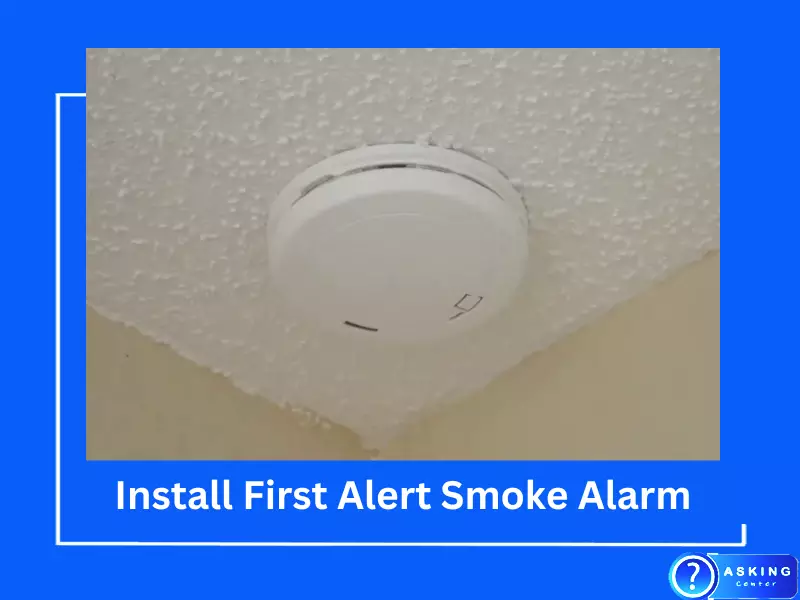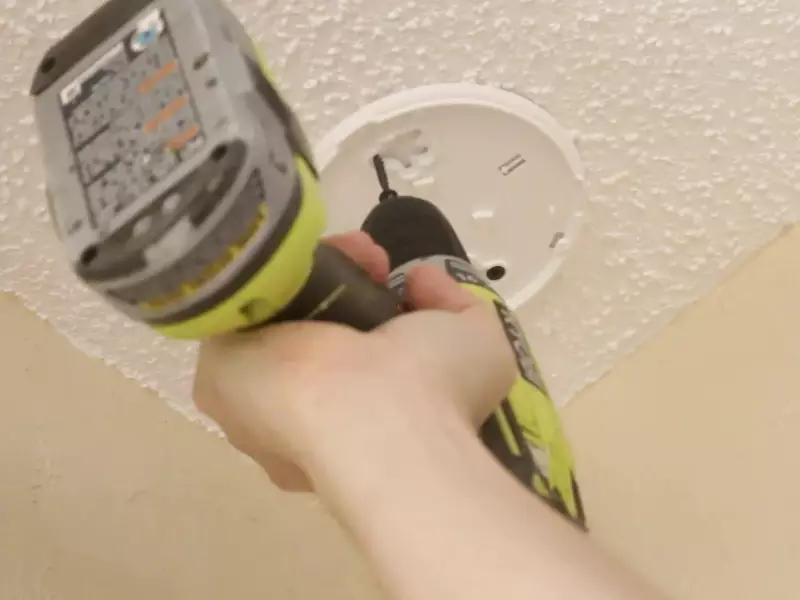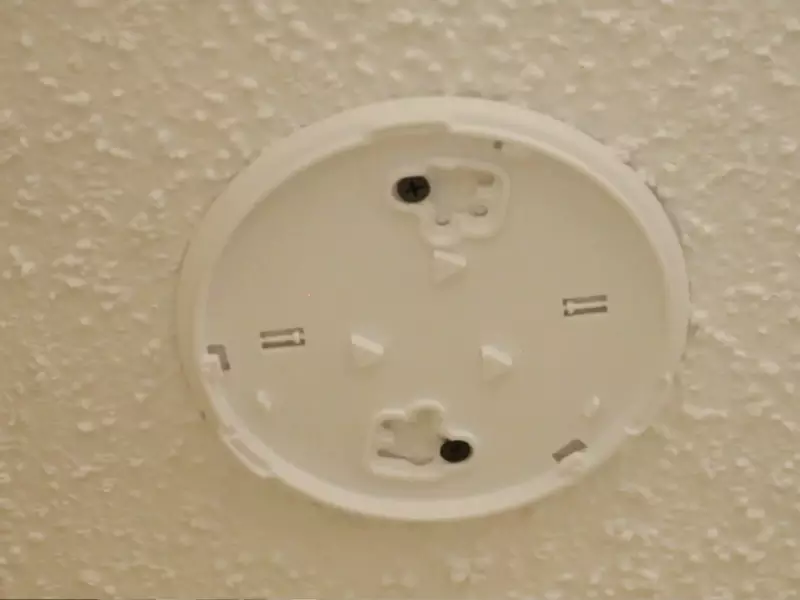Ensuring home safety often begins with the installation of essential devices like smoke alarms. The First Alert Smoke Alarm has become synonymous with reliability and cutting-edge technology, allowing homeowners to trust in its capabilities. Its role in safeguarding against potential fire hazards cannot be emphasized enough.
The First Alert Smoke Alarm is a leading product in home safety. Designed with precision, it detects smoke efficiently and promptly, offering an early warning to residents. Installing it correctly is crucial to harness its full potential and ensure optimal function.
Smoke alarms are not just devices; they are vital components of a household’s safety net. When selecting a smoke alarm, considering the brand’s reputation and product features is imperative. First Alert stands out in this regard, offering an amalgamation of quality and performance.
Why Choose First Alert?
Choosing the right smoke alarm for your home or office is a decision that requires careful consideration. Among the plethora of options available, First Alert stands out for several reasons.
Brand Reliability and Reputation
First Alert has carved a niche for itself in the home safety sector. With decades of dedicated service, the brand has garnered trust and respect:
- Reliability: First Alert has a track record of producing high-quality alarms that consistently perform well.
- Commitment: The brand’s commitment to safety and innovation is evident in their product lineup and continuous improvements.
- Recognition: Owing to its unwavering quality, First Alert is often the top choice for professionals in the HVAC and safety industry.
Key Features of First Alert Smoke Alarm
When investing in a smoke alarm, functionality and additional features play a pivotal role. First Alert Smoke Alarm boasts:
- Sensitivity: The alarms are engineered to detect even the slightest traces of smoke, ensuring timely alerts.
- Longevity: With a robust build, they promise long-lasting performance without frequent maintenance.
- User-Friendly Interface: Clear indicators, easy-to-use test buttons, and uncomplicated setup make it a favorite among homeowners.
- Interconnectivity: Some models offer the ability to connect with other alarms, ensuring that if one alarm triggers, all alarms sound together.
Feedback and Ratings
Real-world feedback from users offers invaluable insights. A cursory glance at user reviews reveals:
- Consistency: Users often highlight the alarm’s consistent performance.
- Ease of Installation: Many commend the straightforward installation process.
- Promptness: The alarm’s prompt detection and alert system have received appreciative mentions.

Pre-Installation Steps
Before diving into the installation process, a few preparatory measures are necessary. These steps ensure smooth installation and optimum performance.
Safety Precautions to Consider
Safety should never be compromised. Keep these points in mind:
- Power Off: If installing a hard-wired unit, ensure the power is turned off to prevent electrical mishaps.
- Avoid Obstructions: Steer clear of vents, fans, or large furniture that might hinder smoke detection.
- Work with Caution: Use a sturdy ladder or step-stool. Ensure you’re comfortably balanced and not overreaching.
Necessary Tools and Materials
Having the right tools at your disposal simplifies the process. Here’s a basic list to help:
- Screwdriver: A basic tool for mounting.
- Drill: If you need to make holes in the wall or ceiling.
- Anchors and Screws: These usually come with the package.
- Pencil or Marker: For marking drill points.
Ideal Locations to Install
The placement of a smoke alarm can influence its effectiveness. Here are some guidelines:
- Bedrooms: Install one in each sleeping area to ensure everyone is alerted.
- Hallways: If bedrooms are adjacent, placing one in the hallway can suffice.
- Multiple Floors: If your home spans multiple levels, place at least one alarm on each floor.
- Avoid Kitchens: Smoke from cooking might trigger false alarms. Instead, place it at least 10 feet away.

Step-by-Step Installation Guide
Smoke alarms are a homeowner’s silent guardians. For them to function seamlessly, accurate installation is paramount. Here’s a detailed guide to setting up the First Alert Smoke Alarm.
Preliminary Setup
Before diving into the main installation, a few initial steps pave the way for a smoother process.
Unboxing and Familiarizing with Components
Open the package with care:
- Manual: Always your go-to for specific instructions.
- Smoke Alarm Unit: The main device that’ll be mounted.
- Mounting Bracket: Used to secure the unit to the ceiling or wall.
- Screws and Anchors: Essential for attaching the bracket.
Checking for Battery or Electrical Setup
Different models have varying power sources:
- Battery-Powered: Ensure the battery compartment is accessible and the batteries are included.
- Electrically Wired: Identify the wiring harness that’ll connect the alarm to your home’s electrical system.
Mounting the Bracket
The bracket is the smoke alarm’s foundation. Proper installation is crucial for the device’s stability.
Choosing the Right Spot on the Ceiling or Wall
Location matters:
- Ceiling: Optimal as smoke rises. Place it at the center for best coverage.
- Wall: If opting for a wall, ensure it’s 12 inches from the ceiling.
- Avoid Proximity to Vents: Airflow from vents can disrupt the smoke’s path to the alarm.
Drilling and Setting up the Bracket
Once the spot is chosen:
- Use a pencil to mark the spots where you’ll drill.
- Drill holes and gently hammer in the provided anchors.
- Align the mounting bracket with the anchors.
- Secure it using the provided screws.

Attaching the Alarm
With the bracket in place, the next step is fitting the smoke alarm unit.
Connecting to the Power (if Wired)
If your model is electrically powered:
- Connect the wiring harness of the alarm to the matching power wires from the ceiling or wall.
- Ensure all connections are secure using wire caps.
Ensuring a Snug Fit onto the Bracket
The alarm will have slots or grooves that match the bracket:
- Align the smoke alarm with the bracket.
- Turn the unit clockwise till it’s firmly attached.
Activation and Testing
With the unit in place, it’s time to power it up and test.
Switching the Alarm On
- For battery-powered units: Insert the batteries, ensuring correct polarity.
- For electrically wired units: The connection made earlier should power the alarm once the home’s main power is on.
Running the Initial Test for Functionality
It’s vital to ensure the alarm is operational:
- Press the test button on the unit.
- A loud siren should sound, indicating proper functionality.
- In the absence of a sound, recheck battery or wiring connections.
Post-Installation Care
After successfully installing your First Alert Smoke Alarm, the journey doesn’t end. To ensure its longevity and optimal functioning, ongoing care is pivotal. Here’s a comprehensive guide on maintaining your smoke alarm post-installation.
Routine Testing
For any safety device, regular checks are the linchpin ensuring operational integrity.
Frequency and Method for Regular Checks
The frequency of these checks plays a vital role:
- Monthly Testing: Aim for a monthly press on the test button. This ensures the alarm’s siren and electronic components remain functional.
- Yearly In-Depth Inspection: Apart from monthly tests, an annual comprehensive check is prudent. This includes checking for any physical damages, expired batteries, and assessing overall health.
Troubleshooting Minor Issues
Occasionally, you might face minor hiccups:
- No Sound During Test: Ensure the battery is still potent or the wired connection is intact.
- Intermittent Beeping: Often indicates a low battery. Replace it promptly.
- Continuous False Alarms: Could be due to the alarm being too close to kitchen smoke or bathroom steam. Consider relocation.
Maintenance Tips
To ensure the longevity of your alarm, maintenance is pivotal.
Cleaning the Alarm
Dust and debris can impede smoke alarm sensors:
- Monthly: Use a soft brush attachment on a vacuum to clean the vents.
- Semi-annually: Wipe down the exterior with a slightly damp cloth to prevent dust accumulation.
Replacing Batteries (for Battery-Operated Units)
A constant power source is crucial:
- Regularly Check Battery Strength: If your alarm doesn’t have a low battery indicator, replace the battery annually as a preventive measure.
- Choose Quality: Always opt for reputed battery brands to ensure longevity and reliability.
Handling False Alarms
False alarms can be vexing:
- Ventilate: Often, kitchen smoke or steam from bathrooms can trigger false alarms. Increase ventilation in these areas.
- Relocate: If false alarms persist, consider moving the smoke alarm to a more suitable location.
- Check Sensitivity: Some alarms allow for sensitivity adjustments. Consult your manual if available.
Alarm Integration
Modern homes often sport integrated safety systems. The First Alert Smoke Alarm doesn’t fall behind in compatibility.
Linking with Other Home Safety Systems
Integration amplifies security:
- Smoke and CO Alarms: Integrate with carbon monoxide alarms for dual safety.
- Security System: Link with your home’s security system for combined alerts.
Mobile Alerts and Smart Home Compatibility
Staying connected is now more straightforward:
- Mobile Notifications: Some advanced models can connect to mobile apps, sending real-time alerts in case of smoke detection.
- Smart Home Platforms: Integration with platforms like Google Home or Amazon Alexa offers voice alerts and remote testing functionality.
Frequently Asked Questions
Why Choose First Alert over other brands?
How often should the First Alert Smoke Alarm be tested?
Is it challenging to install the First Alert Smoke Alarm?
Conclusion
In the realm of home safety, few devices match the significance of a reliable smoke alarm. The First Alert Smoke Alarm, with its features and reliability, undoubtedly leads in providing the required safety measures. A correctly installed smoke alarm acts as the first line of defense against unforeseen fire hazards.
While many may perceive the installation process as daunting, in reality, it’s a straightforward procedure. Ensuring the right steps are followed is pivotal to the alarm’s functionality. After all, when it comes to the safety of loved ones, no measure is too small.
Endorsing the importance of smoke alarms is not just about advocating a product. It’s about promoting safety, preparedness, and ensuring that every home has a fighting chance against potential fire hazards.
